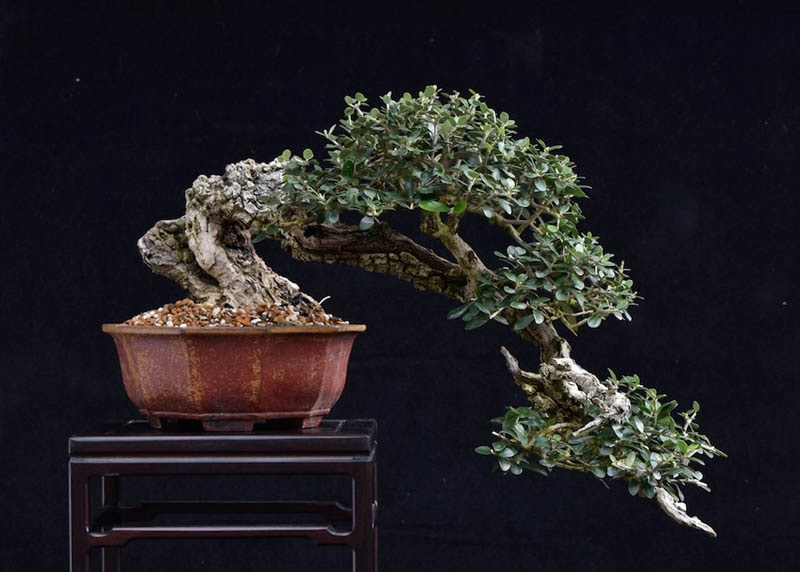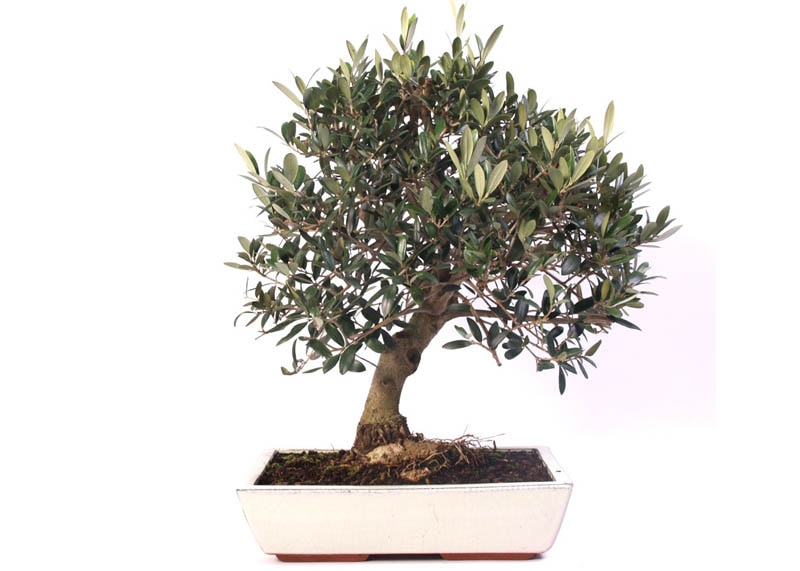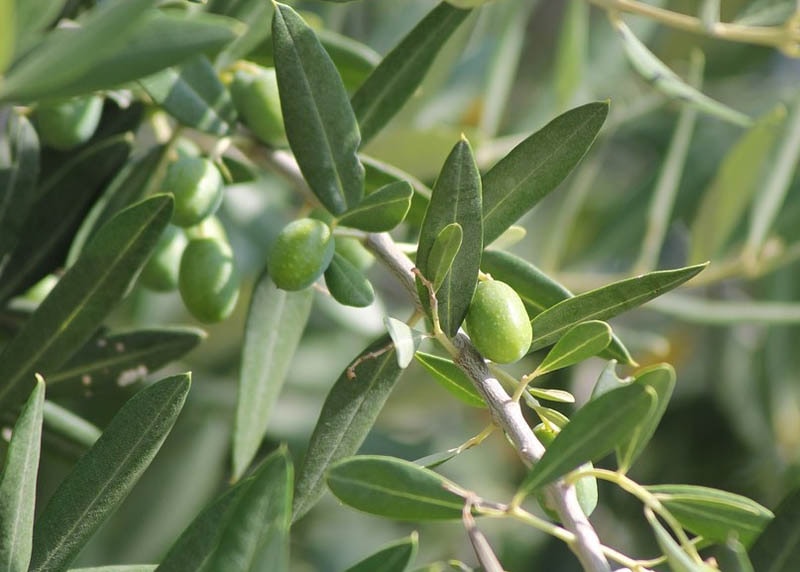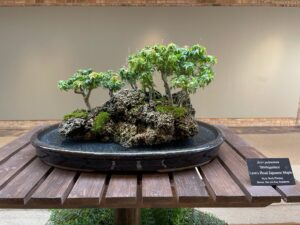
OLIVE TREE
The Olea Europaea (Olive) and Olea Europaea Sylvestris (Wild olive) make great bonsai. The wild type of olive tree is the ancestor of the cultivated olive tree.
These trees belong to the Oleaceae family and originate from the Mediterranean coast. Their Latin name “Oleum” means oil, and their fruits obtain olive oil.
Olive trees are evergreen trees or shrubs. It is a very slow grower opposite last month’s Tree of the Month, the Eucalyptus.
Wild Olive trees are smaller than cultivars. The wild olive’s leaves are much smaller, rounder with short internodes, and the leave’s underside is greyer. Its dead wood is whiter, and Its cracked bark is longer and smaller. In many cases, yamadori oleasters possess beautiful natural deadwood and a lovely rough bark that indicates a high age and survival in hostile conditions.
The olive leaves are thinner and longer, and their color is deep green. Its dead wood is sand-colored, and its cracked bark is larger and thicker.
It has been cultivated since 4000 BC for its fruit. In many cultures and religions, it is given a meaning of wisdom and considered a sacred tree. Because of its great age and longevity, it is also associated with resistance and renewal.
INTERESTING FACT: The al Badawi olive tree in Bethlehem is somewhere between 4,000 and 5,000 years old.
STYLING:
An olive tree is very versatile. It can be shaped into almost any bonsai style, Formal Upright, Informal Upright, Slanting, Cascade, Semi-Cascade, Wind Swept. It can be Clinging-to-a-rock or Root over Rock. Really whatever you like.
PLACEMENT:
The olive bonsai needs a place with full sun which also helps to reduce the size of the leaves. It can withstand an occasional temperature of 32° F but must be protected from strong frosts. It is best to place the olive tree in a cold, frost-free greenhouse in winter. If kept in a warm room in winter, the olive will suffer from a lack of light and dry air.
WATERING:
Water the olive bonsai thoroughly whenever the soil gets dry but avoid constant wetness. Watering should be moderate in spring, abundant in summer, and scarce in autumn and winter.
FERTILIZING:
Fertilize regularly during the growing season. You should start before spring and continue fertilizing in summer with a fertilizer that contains more nitrogen than phosphorous and potassium. When the temperature gets into the 90ºs in summer, it is best to stop fertilization until the summer temperatures drop below 90ºs. Then we can start fertilizing again until the end of autumn, lowering the nitrogen level to promote root growth.
PRUNING AND WIRING:
Olives have very hard wood, making them well suited for a bonsai with large deadwood areas. Vigorous pruning, if necessary, should be done in late winter but not too often because of its slow growth rate. The olive will respond with strong growth the following spring, even budding on old wood. When the new shoots grow too long, cut back to one or two pairs of leaves.
Wiring is possible and is carried out in the summer months. However, since the olive sprouts out well, it is often not necessary to apply bonsai wire. Be careful when using wire and bending older branches. Older shoots are hard and brittle and can break easily. Therefore, you must be cautious about bending after the bonsai has been wired. Young shoots can be shaped much better. If there is a danger that an older branch could break when bending, pulling down with a thin guy wire is an excellent way to get the branch into the desired shape.
REPOTTING:
The olive tree is slow-growing and is ideal for pot-growing Repot in spring before the buds begin to swell, every two or three years if needed ( longer for old trees ), and remove about a third of the roots. After repotting, place your tree in a wind-sheltered, sunny place for a few weeks.
PESTS AND DISEASES:
if olive tree bonsai are appropriately cared for (sunny location, good air circulation, suitable substrate), there is hardly any pest infestation. Sometimes you can find scale insects or aphids, especially when fertilizing a lot, but that is about it.
PROPAGATION:
New olive tree plants can be grown by tree seeds and cuttings. Air layering of older plants is also a possibility.
Written by Charlotte Field
References: Bonsai Empire, BONSAISCHULE WENDDORF , Mistral Bonsai , Angel Mota





